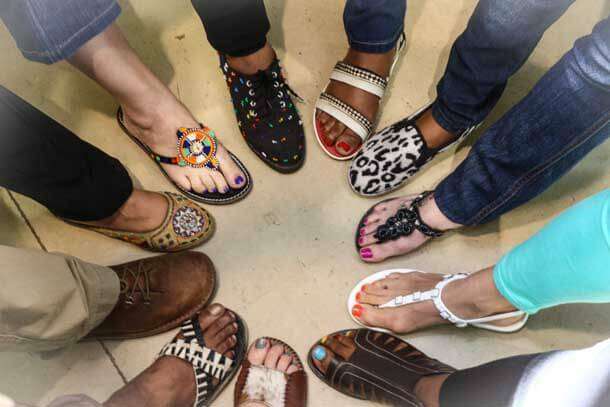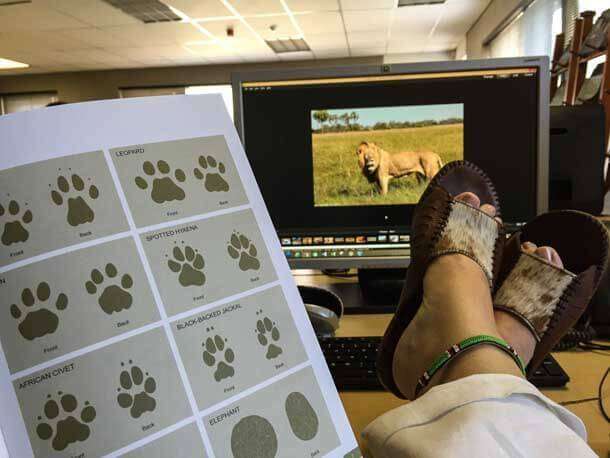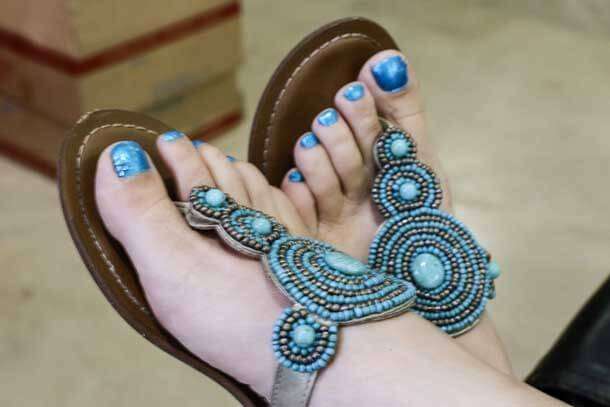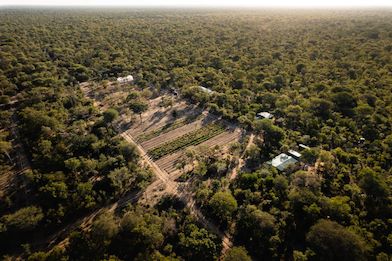Today in Africa, shoes represent an important part of daily lives and are developing to suit cultural and environmental functionality…

Shoes are both useful and aesthetic, providing many with protection in non-optimal environments and helping people to work more efficiently. The available evidence about past African culture suggests that most Africans did not wear shoes, and it has proved difficult to find archaeological evidence or a timeline of the beginning of the existence of shoes or footwear. Most figurines, paintings and statues show Africans barefoot and it is thought that interactions with Greeks, Arabs and Europeans may have prompted this shift from barefoot to sandaled feet. However depictions of Egyptian figurines, statues and paintings show proof of a hierarchy in the use of footwear, so it can also be assumed that shoes and footwear were a status symbol.
Later, through Europeans establishing trade routes during the 1400s, Africans began creating their own footwear modelled on Western examples. Today as then, shoes are a symbol of status and only the wealthy are able to afford them. Due to the cost of shoes and indeed warmer climates in Africa in comparison to Europe, most Africans still do not wear shoes, and prefer bare feet or sandals unless for official purposes like work or ceremonial functions. There is a huge market for cheaper second-hand shoes or cheap imports from Sino-Asia.
From evidence gathered by anthropologists, traditionally materials used to make shoes were leather, rawhide, wood and metal. Leading ethnicities that are known for their traditional footwear include Buganda from Uganda and the equestrian Hausa of Niger and Nigeria whose thigh-length boots provided protection while riding camels or horses. In Ghana, Ashanti ceremonies abound with references to footwear as the king’s feet are never to touch the ground. The Yoruba elite are also known for their elaborate beadwork on their boots as are the Cameroonians who had metal cast shoes. Zaireans used wooden toe-knob sandals.

In southern Africa the modern design of a home-bred shoe (veldskoen) is believed to have been based on the traditional Khoisan footwear observed by settlers. The name derives from two words vel (skin) and skoen (shoe) and is named appropriately as the shoe is made from tanned leather or a soft rawhide upper attached to a leather foot-bed and a rubber sole without tacks or nails. Today the soles are also made from car tyres. The shoes were made popular by the Dutch East India Company and proved fashionable and functional during the Great Trek as they could withstand the harsh conditions. These tough and comfortable shoes were used extensively by the Rhodesian Army during the Rhodesian Bush War (1964-1979) and were favourite footwear for the Selous Scouts, who through the creped sole could walk without leaving a track in comparison to the soles found on infantry boots. Veldskoens are still very much a part of southern African culture in Namibia, South Africa and Zimbabwe as they are worn by all classes and professions but especially farmers and safari guides. C & J Clark has since improved on the original design and made the desert boot which is styled with the same round toe and style.

Perhaps due the warm climate and price of shoes, sandals are very much a favourite in southern Africa and can be embroided or plain as in the Tswana dancing sandals to denote cultural relevance. Zulu izimbadada (casual sandals with a horizontal strap), dabul’zwane (dancing shoes that split the big toe from the other four) and izingcab’lela originate from ox leather shoes historically worn in rural KwaZulu Natal area. When migrant workers travelled to the major cities they incorporated urban materials such as car tyres soles and straps into the design, and today brand names and global designs add flair. These branded Zulu shoes are symbolic of dual identity of the migrant worker and the city dweller and are sold extensively in South Africa as souvenirs or for practical use. This local design of sandal and slipper has many different names throughout the region depending on the ethnic dialect.
Gumboots or Wellington boots became a cultural symbol and a symbol for resistance for South African miners during the apartheid era. What has now been popularized as the “Gumboot Dance” isicathulo was a coded communication system between African workers in the mines similar to Morse code which used the different taps and stamps as a language of communication where a strict rule of no talking in the mine tunnels beneath the surface prevailed. This adaptation and use of gumboots as protective footwear was not voluntary for the African miners but was enforced as a cheaper option to prevent skin ulcers, foot problems and lost work time, rather than draining the sometimes knee-high infected waters in which the miners stood for hours every day.








